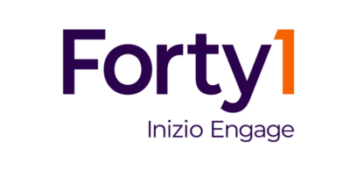How do we keep our people passionate about the causes we commemorate and ensure they make a positive difference? In the ever-changing realm of corporate communications and culture, employees are inundated with internal messages. The initial enthusiasm for ‘affinity day’ communications has waned, as these messages often fail to align with the reality of employee experiences or empower individuals to instigate meaningful changes. Commitments to workplace equity and inclusion now face scepticism and communication surrounding these issues are often written off as a compliance exercise or PR campaign by employees.
The challenge is getting employees to act on these communications. International companies struggle to bridge the gap between their words and tangible actions that resonate with their workforce. Navigating unfamiliar local cultures adds complexity, and they risk being perceived as inadequately addressing barriers that leave certain demographics under-represented and under-served within their sectors.
On this International Day of Persons with Disabilities, where companies traditionally aim to raise awareness and foster inclusivity, a common routine of awareness campaigns and events tends to fall flat over time. The sentiment grows that internal communications lack the power to drive the transformative change these campaigns advocate, often appearing inauthentic as workplace dynamics remain largely unchanged.
A New year. A renewed impact.
As we step into 2024, it’s crucial for companies to break free from the limitations of affinity day communications. This piece delves into the pressing need for businesses to broaden their efforts beyond these specific occasions, adopting a more dynamic approach to Diversity, Equity, Inclusion & Belonging (DEI&B). Organisations need to prioritise internal communications that are intricately linked with experiences, empowering employees to take action. Overcoming the growing scepticism among the workforce requires providing tools, resources, spaces and guidance that enable individuals to effect tangible changes, benefiting both the employees and the organisation.
Firstly, let’s address the shortcomings of affinity days for employees:
1. Extended engagement:
Affinity days, though impactful momentarily, can be likened to a quick caffeine hit – intense but short-lived. For example, on the International Day of Persons with Disabilities, we’ll likely see meaningful discussions and informative infographics. Wouldn’t it be so much better to embed policies supporting the wellbeing of individuals with disabilities and discus how these policies can enhance their careers?
2. Inclusivity over exclusivity:
Affinity days inadvertently foster an exclusive atmosphere, leaving some employees feeling excluded. Diversity, akin to disabilities, encompasses both visible and non-visible traits, representing a spectrum of comforts, needs and experiences. The challenge lies in DEI&B communications, which often grapple with these intersections, lacking guidance on diverse wellbeing needs. Rather than attempting to address everything simultaneously, scrutinise and enhance your ways of working regularly to ensure they are effective as your workforce evolves.
Are your practices and approaches truly inclusive, are they facilitating the creation of the best work for all employees in real-life scenarios? Is your technology adaptable to various learning needs? Transform your workplace practices into a true celebration of inclusion and belonging, ensuring employees don’t solely rely on communications for affirmations of belonging. It’s an ongoing conversation focused on collective action to create an environment that works for everyone.
3. From symbolic to systematic:
Reliance on affinity days is akin to only visiting the gym on New Year’s Day after pledging to live a healthier lifestyle. Promising, but not enough for lasting change. To bridge the gap between symbolic celebrations and daily experiences, establish continuous communication channels. Make diversity and inclusion a part of your daily routine, not just an annual resolution. Rethink your ways of working, hiring practices, disability representation and how your products and services are shaped. Encourage collaboration, consistent learning and collective improvement. Beyond storytelling, provide a handbook for people to rewrite narratives for those often excluded from the story. Everything happening in your organisation for the other 364 days significantly affects the impact of that one awareness day.
In short, affinity day communications often fall short due to a lack of action that they inspire and empower employees to take, so they can change the realities of the communities we are advocating on behalf of.
It’s like a celebration without a dance floor; a simple meeting in the corporate calendar.
Have you prepped your employees to take action?
Do your communications warm up employees for real action? What can they do now to help deliver change that they couldn’t before? In our previous articles in this series, we explained why it’s crucial to build strong foundations for these communications. We discussed what should be included in them so that people understand their roles and the reasons they need to act together as part of your organisation.
Likewise in our articles such as Employee Belonging: Integrating DEI, Health, and Wellbeing for Truly Equitable Workplaces, we get our clients to reflect on what experiences and activations they have alongside their internal communications to show that it is more than words, it is a call to create change that people can experience.
Here are four popular experiences I have created on behalf of clients regarding improving the realities of their employees with disabilities:
1. Accessible Workspace Day:
Organise a day focused on raising awareness about accessibility in the workplace. Provide simulations or experiences that help employees understand the challenges faced by colleagues with disabilities. Encourage discussions on how to make workspaces more inclusive.
2. Tech for All Workshop:
Conduct a workshop to showcase and train employees on accessible technologies and get your own product/service teams to rethink the way they design outputs for clients. Invite experts to demonstrate how screen readers, voice command systems and other tools work. Encourage employees to explore and adopt accessible technologies in their daily tasks.
3. Wellbeing & Flexibility Expo:
A comprehensive look at workplace wellness. Engage with inspiring stories of how employees contributed to policies and benefitted from them, delve into a resource hub for tailored policies, participate in interactive workshops to optimise work-life balance, and receive personalised guidance through an inclusive diagnostic tool.
4. Accessible Communication Challenge:
Launch a challenge to improve the accessibility of internal communications. Encourage employees to create content that is inclusive, considering different formats such as audio descriptions, alternative text, or easy-to-read formats.
Affinity days that kickstart change!
These are just a few examples to inspire you – feel free to use them or make them your own. However you choose to commemorate International Day of Persons with Disabilities and affinity days going forward, remember your long-term ambitions and how you set your team up to evolve.
Strategically inform your team by providing them with actionable tools, allocating dedicated time and resources for them to take action and make a difference. Acknowledge their day-to-day experiences genuinely and facilitate their evolution.
Without these essential components, motivating change becomes as futile as attempting to brew chai without the masala. All you’ve done is create a bland concoction that no one will enjoy. Let’s sidestep mediocrity and infuse vibrancy into your affinity day communications by pairing them with experiences and activations that warm employees up to act.



